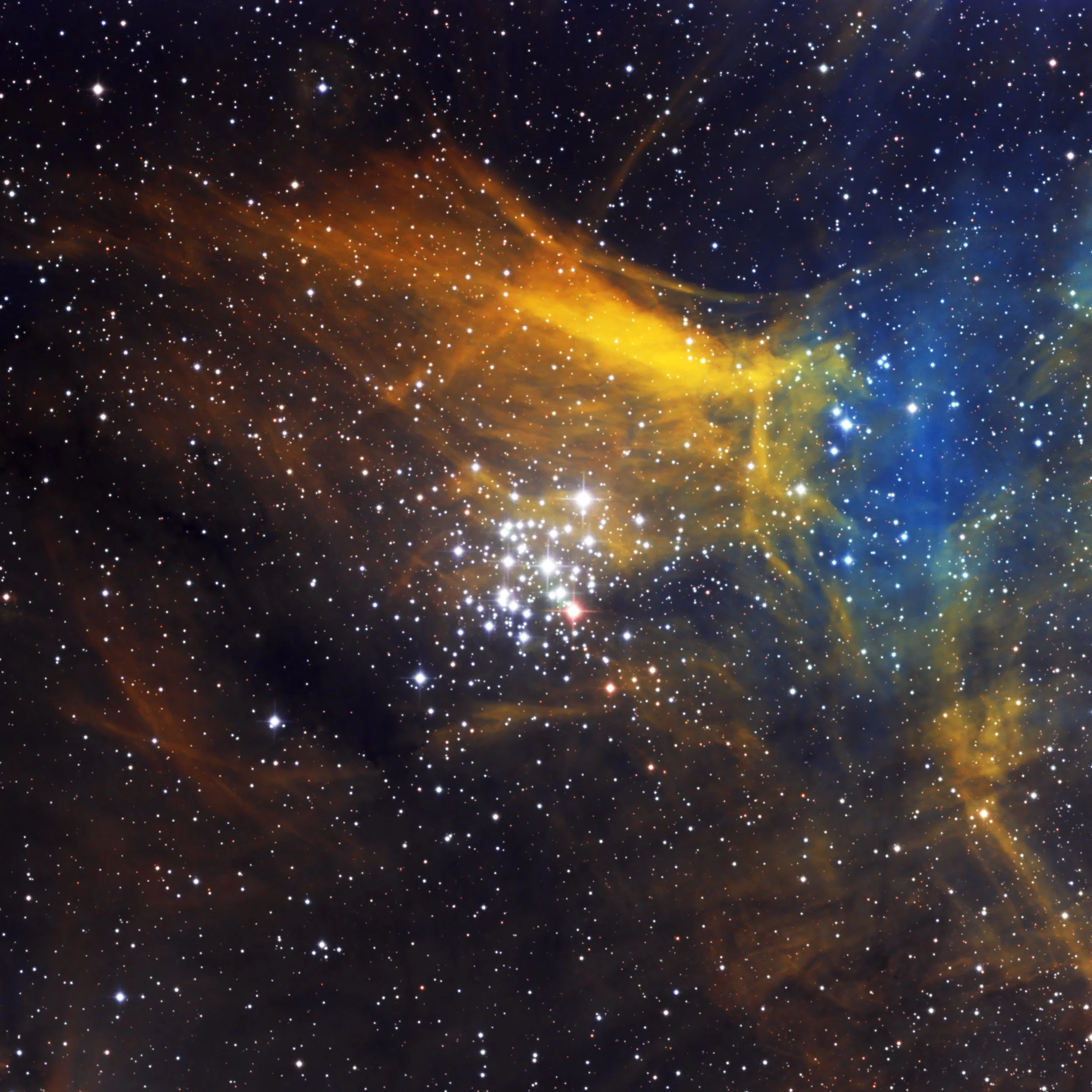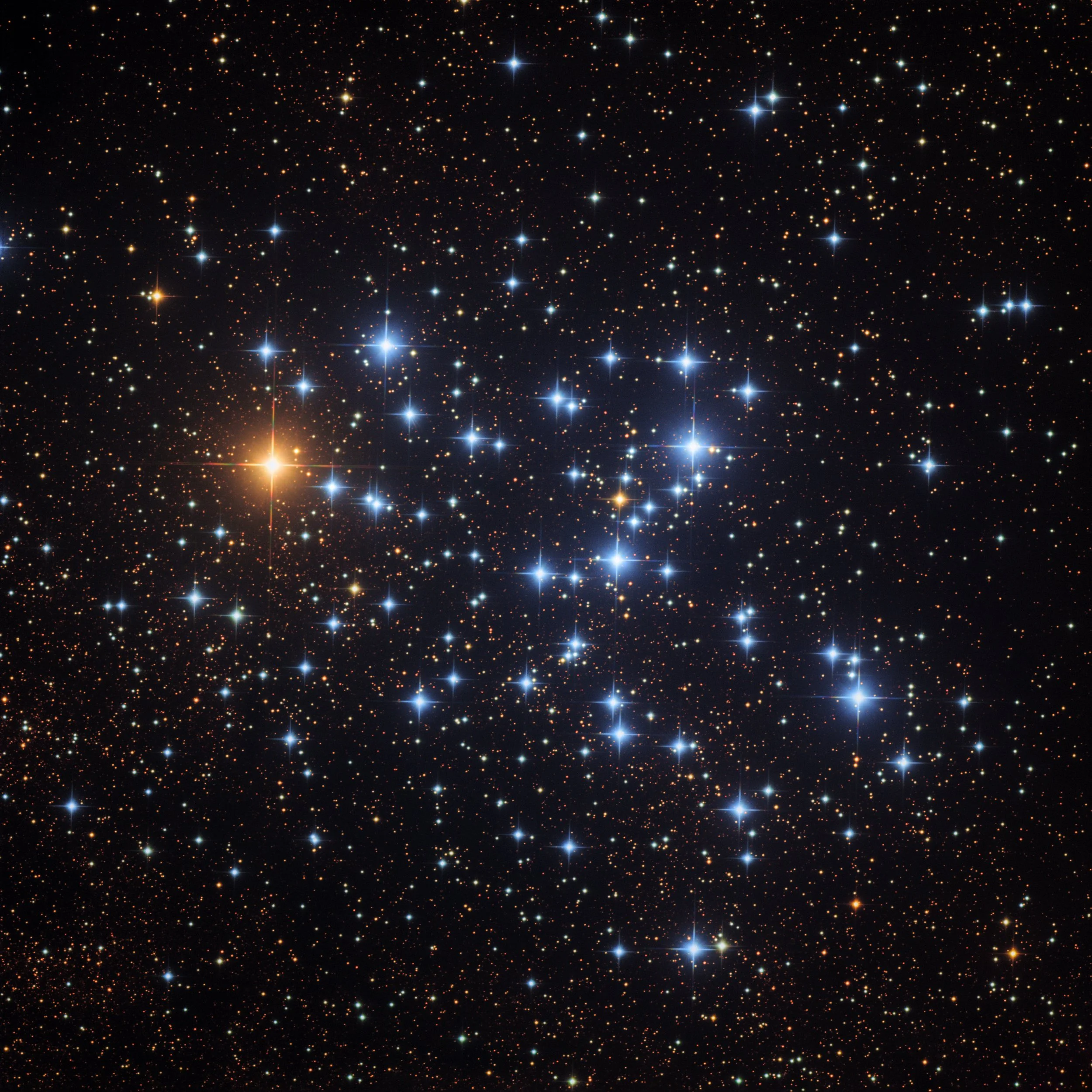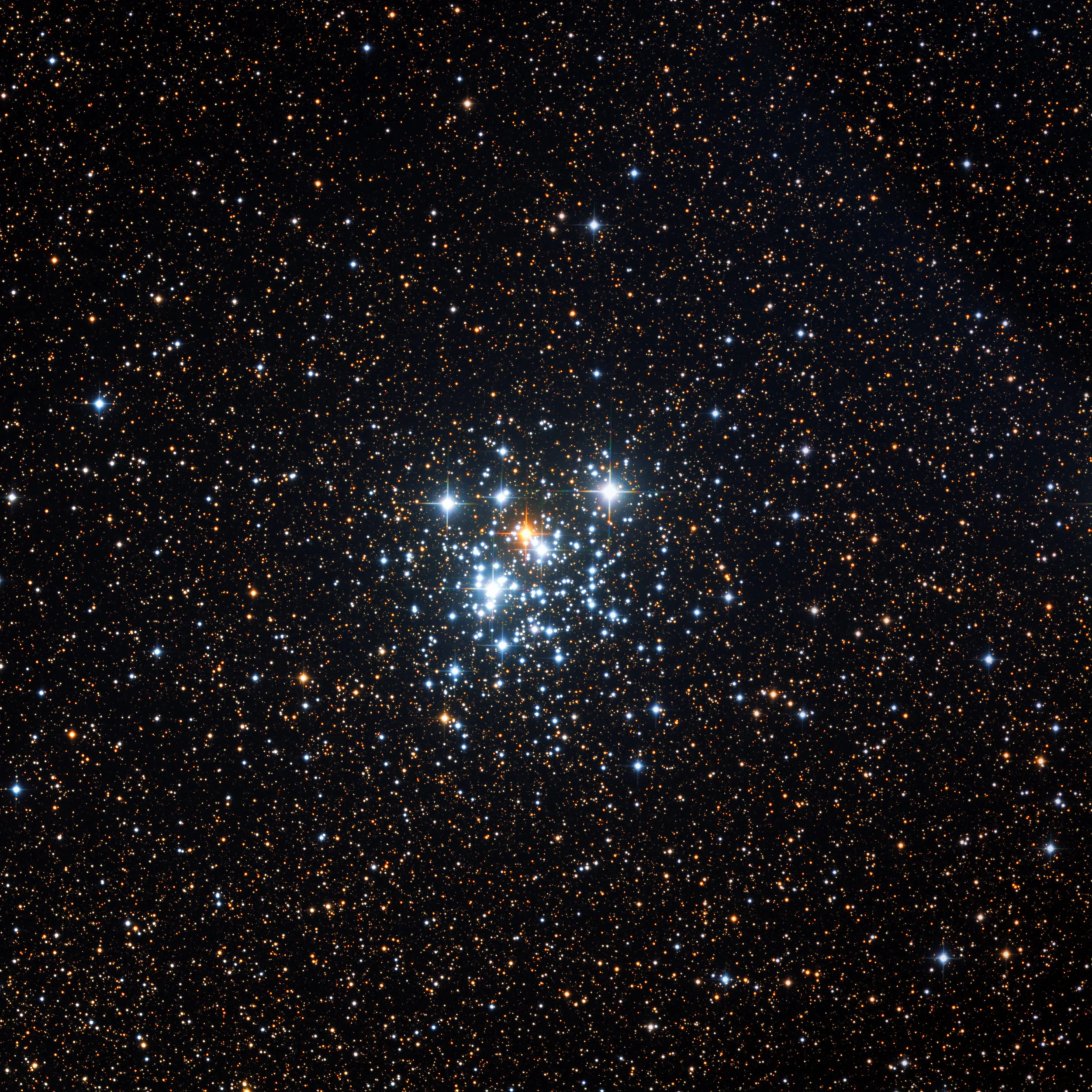Open Clusters
The Pleiades is an incredibly beautiful and interesting celestial object. For a long time, our ancestors awed upon its existence and pondered the message it carries. For ancient Greeks, they are seven sisters transformed into stars to accompany their father Zeus. Interestingly, modern science revealed that the seven stars really are 'sisters’; because they are born together from the same molecular cloud about 100 million years ago. In human multiple births, we call two babies twins, three triplets, four quadruplets... The Pleiades would have been called a 'hundruplets' because the giant cloud gave birth to hundreds of stars at the same time!
Picture 2 shows a group of newborn stars (an open cluster) surrounded by their 'mother stellar cloud' (NGC 3293). Radiation from the newborn stars energised the gas cloud and caused it to glow, forming the beautiful nebula you see in the picture. The strong solar wind slowly pushes away the clouds as the stars drift away. In a few million years, the nebula will completely evaporate and disappear, leaving behind a group of sister stars travelling through empty space.
Picture 3 shows an open cluster just like that, called the butterfly cluster.
They will encounter many celestial objects during their journey. The gravitational pull might cause some of the stars to leave the cluster and become part of the galaxy’s main body. Picture 4 shows a young cluster beginning its journey in the milky way (the Jewel Box Cluster). Each yellow dot in its vicinity is a star in our galaxy, and there are thousands of them.
If you are intrigued, go and try to see an open cluster yourself! They are incredibly beautiful and easy to find. You've probably seen one without even knowing it.
(The data was acquired from Telescopelive, which I processed using pixinsight and photoshop).





